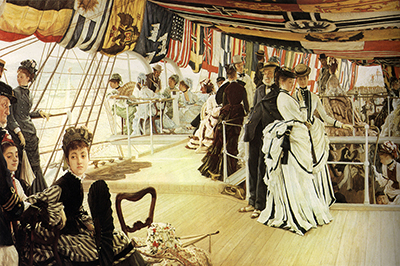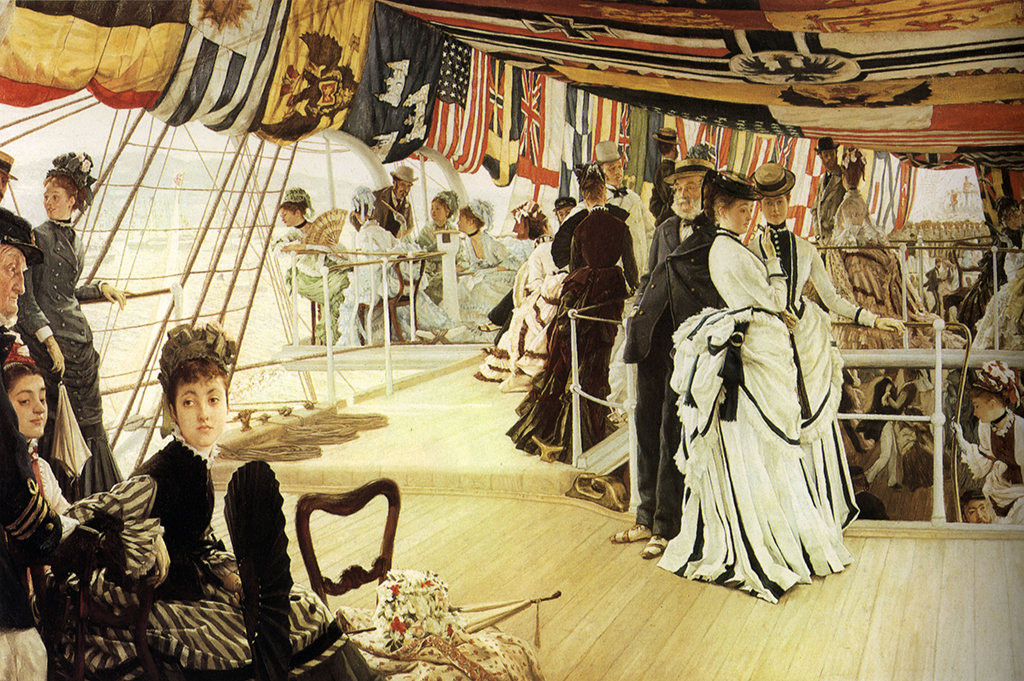James Tissot's Ball on Shipboard from 1874 is a fine example of his ability to capture the lives of the Victorian middle classes within photo-realistic images. His unique combination of Impressionism and Realism would help to secure his financial future with a considerable list of willing donors.
Here we find a glamorous occasion - a ball up on deck. The scene is filled predominantly with charming women socialising in the fresh air, whilst a number of young men are dotted around across the canvas. The general atmosphere is fairly calm, with some busy chatting, whilst others look out blankly across the sea. In the background there are a number of smaller vessels which leads us to the conclusion that perhaps the ship itself is in dock within a small harbour. The visitors may have joined the ball just for the evening, rather than being a part of a larger journey for several days or weeks. The upper level of the painting is filled with a series of flags which point to various nations of that period, as well as a selection of maritime related flags within them. This helps to bring an international feel to this artwork.
Artist Tissot would come under considerable criticism from some in the UK for his focus on the middle classes, and for the simplicity of his paintings, where no social messages were ever used. He wanted to produce aesthetically pleasing art that all could access, and this went against some of the leading figures of that period. In the present day we are more able to appreciate different styles within art and this allows Tissot to be judged more fairly. Victorian art more generally has received an increase in popularity in recent years and this has brought the likes of this artist back to our attention. Ball on Shipboard remains one of his most famous paintings of all, though you will find the maritime theme continuing throughout much of his oeuvre, particularly during the 1870s.
Tissot himself sought a style which did not fit perfectly into one single movement. His freinds were from the Impressionist movement and much of his work beared a clear resemblance of this style. But he refused to work completely in line with their beliefs, and preferred elements of realism within his style too. This combination was derided by some as shallow in meaning, but others lapped it up and appreciated his no-fuss approach to art. The accessibility of his paintings allowed him to secure his financial future, with several rich individuals following his career closely and occasionally adding some of his output into their own private collections. The criticism that came his way would not have upset him too much, for Tissot was a confident and head strong individual who felt comfortable with his decision to go his own way and loved the artistic independance that he had afforded himself.





